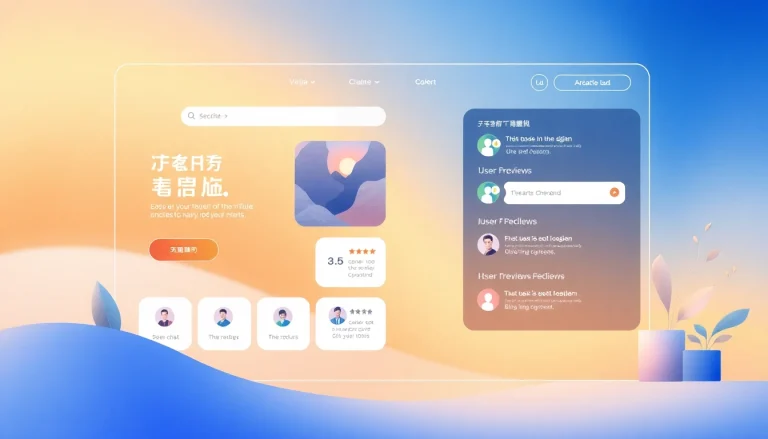Understanding Competitive Intelligence
In today’s fast-paced business environment, understanding and adapting to market dynamics is essential for sustaining competitive advantage. This is where competitive intelligence (CI) comes into play. CI involves the systematic collection and analysis of data about rivals within the market, including their offerings, strategies, strengths, and weaknesses. By ensuring that a business stays informed about its competitive landscape, organizations can optimize their strategies and make data-driven decisions that enhance their overall performance.
What is Competitive Intelligence?
At its core, competitive intelligence can be defined as the act of gathering, analyzing, and disseminating actionable information regarding the competition and the market environment. According to the SJSU School of Information, it is the systematic process of monitoring external information that holds strategic value, such as competitor analysis, market conditions, and customer preferences. This practice helps businesses acquire insights that contribute to strategic decision-making and long-term planning.
Importance of Competitive Intelligence in Business
Competitive intelligence is crucial for identifying market trends, evaluating risks, enhancing product development strategies, and improving customer satisfaction. Its significance lies in its ability to provide organizations with a clearer view of their competitive landscape, allowing them to anticipate actions taken by competitors and react promptly. The use of CI not only aids in strategic foresight but also enhances operational efficiency by aligning resources effectively against competitors.
Key Components of Competitive Intelligence
The framework of competitive intelligence can be broken down into four key components:
- Data Collection: This involves utilizing various methods to gather qualitative and quantitative data about the competitive environment.
- Analysis: After data collection, the information is analyzed to derive actionable insights, identify patterns, and forecast future trends.
- Dissemination: The insights gained from analysis need to be shared appropriately within the organization to facilitate informed decision-making.
- Action: Finally, organizations must implement strategies based on the insights derived from competitive intelligence to capitalize on identified opportunities and mitigate risks.
Methods of Collecting Competitive Intelligence
Effective competitive intelligence hinges on robust data collection techniques. Organizations employ various methodologies to gather comprehensive information, which can be categorized into primary and secondary research techniques.
Primary Research Techniques
Primary research refers to the collection of data directly from sources. This can include:
- Interviews: Conducting interviews with industry experts or former employees of competitors can yield invaluable insights about competitor strategies and internal processes.
- Surveys: Gathering information from customers about their preferences can help organizations understand the strengths and weaknesses of competitors.
- Field Research: Observing competitors’ operations and promotional strategies in their operational environment can provide a ground-level understanding of their approach.
Secondary Research Techniques
Secondary research involves analyzing existing data that has already been collected and published. This can include:
- Market Reports: Leveraging market research reports provides insights into industry trends, competitive benchmarks, and emerging threats.
- Academic Journals: Academic studies can provide theoretical frameworks and insights into market dynamics that could inform business strategies.
- Competitor Websites: Reviewing competitors’ websites can reveal information about their product offerings, pricing strategies, and promotional tactics.
Leveraging Digital Tools for Data Gathering
In the digital age, numerous tools and technologies can assist organizations in gathering and analyzing competitive intelligence. Some commonly used digital tools include:
- SEO Tools: Tools like SEMrush and Ahrefs allow businesses to analyze competitors’ online visibility, keyword strategies, and backlink profiles.
- Social Media Analytics: Platforms like BuzzSumo enable businesses to track competitors’ social media performance and campaign effectiveness.
- News Aggregators: Tools like Google Alerts or Feedly can help organizations to stay informed about competitors’ latest news and developments.
Analyzing Competitive Intelligence Data
Data analysis is a critical aspect of competitive intelligence as it transforms raw data into actionable insights. Employing effective techniques to analyze gathered data is essential for informed decision-making.
Techniques for Effective Data Analysis
Several analytical techniques can be utilized to make sense of competitive intelligence data, including:
- SWOT Analysis: This model analyzes the Strengths, Weaknesses, Opportunities, and Threats related to a business or product. It can help organizations to clarify their strategic position in relation to competitors.
- Porter’s Five Forces Analysis: This framework assesses the competitive intensity and attractiveness of a market environment, measuring the threat of new entrants, rivalry among existing competitors, the bargaining power of suppliers, the bargaining power of buyers, and the threat of substitute products.
- Trend Analysis: Identifying patterns within the data collected over time can guide organizations in anticipating market changes and competitor actions.
Identifying Market Trends
Understanding market trends is imperative for strategic planning. By analyzing competitive intelligence data, organizations can identify shifts in consumer behavior, emerging technologies, and competitor movements. For instance, noticing a competitor’s successful incorporation of artificial intelligence in their offerings could signal a trend that others should follow to remain relevant.
Using Data to Inform Business Strategy
Data derived from competitive intelligence analysis should directly inform business strategies. For example, if analysis shows a competitor gaining traction in a new market segment, a business can reallocate resources to fend off that competition or differentiate its offerings to capture that segment. This agile response enhances competitive readiness and secures market positioning.
Best Practices for Implementing Competitive Intelligence
To maximize the effectiveness of competitive intelligence efforts, organizations should adhere to best practices that facilitate efficient implementation and integration.
Creating a Competitive Intelligence Framework
Establishing a structured CI framework tailored to the organization’s unique context is essential. This framework should outline specific objectives, stakeholder roles, processes for data collection and analysis, and mechanisms for disseminating insights across the organization. A well-defined CI framework fosters consistency and reliability in decision-making.
Involving Stakeholders in the Process
Engaging various stakeholders, including marketing teams, product development units, and top management, in the process of CI ensures that insights accommodate diverse perspectives. Collaboration promotes alignment between CI findings and organizational goals, enhancing the relevance and impact of the insights generated.
Continuous Monitoring and Adaptation
Competitive intelligence is not a one-time effort; it requires continuous monitoring of the competitive landscape. Setting up alerts for industry news, regularly revisiting market analyses, and adapting strategies based on new insights are crucial. This proactive approach not only mitigates risks but also capitalizes on fleeting opportunities.
Measuring the Impact of Competitive Intelligence
To evaluate the efficacy of competitive intelligence initiatives, organizations must establish measures to track their impact. Assessing the return on investment (ROI) of CI efforts provides insights into its effectiveness and areas for improvement.
Key Performance Indicators to Track
Effective measurement of competitive intelligence can be established through specific performance metrics, including:
- Market Share Growth: Increased market share can indicate the successful application of insights gained from competitive intelligence.
- Sales Performance: Monitoring fluctuations in sales following implementation of CI-derived strategies can provide insights into effectiveness.
- Customer Feedback: Collecting customer feedback regarding product offerings and services can measure whether adjustments based on CI were successful.
Adjusting Strategies Based on Insights
Collecting and analyzing competitive intelligence is futile if insights are not acted upon. Organizations should be flexible enough to modify their strategies based on CI findings. For instance, if analysis shows that competitors are introducing innovative features that attract customers, it’s prudent for a business to innovate or enhance their offerings to remain competitive.
Case Studies of Successful Implementation
Several companies have exemplified how effective competitive intelligence translates into strategic advantage:
- Netflix: By analyzing viewer behavior and competitor strategies, Netflix successfully transitioned from DVD rentals to streaming services, capturing significant market share in the entertainment industry.
- Coca-Cola: Utilizing competitive intelligence, Coca-Cola strategically expanded its product portfolio to include healthier beverage options, responding to shifting consumer preferences towards healthier choices.
- Apple: Apple’s ability to understand market trends and competitor movements has helped it maintain a strong brand and product differentiation strategy.
In conclusion, competitive intelligence serves as an indispensable tool for businesses aiming to thrive in competitive market landscapes. By systematically gathering, analyzing, and leveraging competitive data, organizations can refine their strategies, adapt to market changes, and capitalize on emerging opportunities. As competition continues to intensify, the significance of competitive intelligence in guiding strategic decisions cannot be overstated. Making CI a core operational component can empower organizations, enabling them to stay ahead of the curve and navigate the complexities of their respective markets successfully.


















